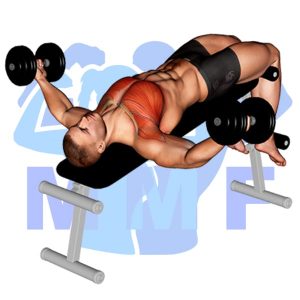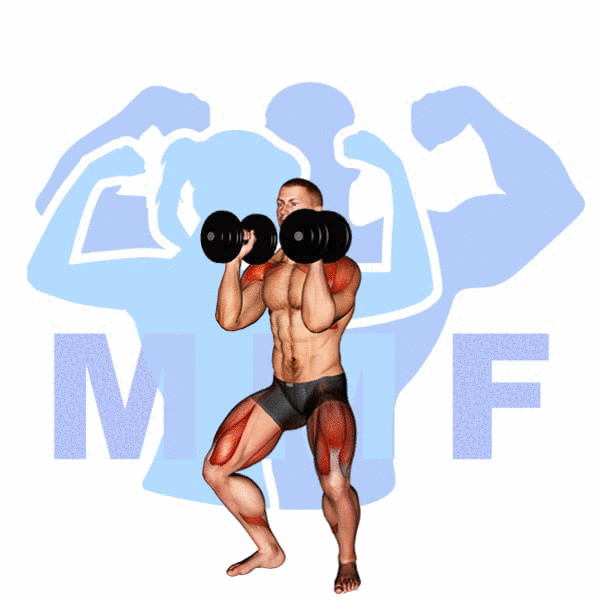Are you struggling to build your chest muscles? Have you been doing countless pushups and bench presses, but still not seeing the results you want? Don’t worry, you’re not alone. Many people face this problem. The cause could be that you’re not targeting your chest muscles effectively, and that’s where cable flys come in. In this post, I will share how cable flys can help you build your chest muscles and perfect your form. Get ready to achieve the results you’ve been working towards.
Cable Flys Summary
- Primary Muscles: Pectoralis Major – Sternal
- Secondary Muscles: Biceps Brachii – Short Head, Deltoid – Anterior, and Pectoralis Major – Clavicular
- Equipment: Cable Machine with Two Single D-Handles
- Mechanics Type: Isolated
- Force: Push
- Utility: Auxiliary

Cable Flys Instructions
- Start with attaching two handles to opposite pulleys set at a height parallel to your chest.
- Grab each handle in a hand while standing in between the pulleys.
- While maintaining your torso erect, bend your elbows slightly while internally rotating your shoulders.
- Next, pull the handles together in front of your chest while maintaining your elbows fixed.
- Return the handles out to the side allowing your chest to stretch a little.
- Repeat for these cable flys for a full set.
Video Tutorial
Cable Flys Muscles
Target (Agonist)
- Pectoralis Major – Sternal
Synergists
- Biceps Brachii – Short Head
- Deltoid – Anterior
- Pectoralis Major – Clavicular
Dynamic Stabilizers
- None
Stabilizers
Antagonist Stabilizers
- None

Benefits of Cable Flys
Cable Flys are an effective exercise for targeting the pectoralis major-sternal, the large chest muscle that runs along the front of the rib cage. By performing Cable Flys, you can build up strength in this muscle group, as well as improve muscular endurance and stability. This exercise is especially beneficial for those looking to improve their upper body strength and posture, as it works to engage both the front and back of the chest. Additionally, Cable Flys can help to promote proper shoulder mechanics, which can be beneficial for athletes and regular exercisers alike.
Tips for Performing Cable Flys
You’ve come at the right location if you desire to forge ahead your ability to perform cable flys. These tips can get you the most from of this amazing workout, while helping you receive all the benefits it has to give. You’ll have the ability to develop your chest muscles, and minimize your chance of getting hurt. Let’s get started and explore how these suggestions will benefit you.
- Keep your elbows slightly bent: Keeping your elbows slightly bent while performing cable flies will help keep the tension in the chest area and maximize muscle growth.
- Maintain good posture: Maintaining good posture during cable flies is important for proper form and safety, as well as getting the most out of the exercise.
- Control the weight: Controlling the weight is key for getting the most out of cable flys, as too much weight can cause injury and too little will not give the desired results.
Benefits and Tips Video
Frequent Mistakes To Avoid
Avoiding common errors might be the difference between a productive training session and a painful injury when executing cable flys. Additionally, in order to maximize your benefits of the exercise, proper form is essential. Through avoiding frequent errors, you will improve your performance and get your desired results. However, take it easy, it’s not as challenging as it might seem. By knowing the mistakes to avert and taking the appropriate actions, you may complete the exercise securely and effectively. Then let’s begin on avoiding those common mistakes and making this exercise a standard part of your strength training.
- Not using correct form: Cable Flys require the user to maintain proper form throughout the exercise, as incorrect form can cause injury and impede progress towards fitness goals.
- Not selecting the appropriate weight: Users should select a weight which is challenging but not too heavy, as too light of a weight will not provide any benefit and too heavy of a weight can lead to improper form and potential injury.
- Not focusing on the muscles being targeted: Cable Flys are designed to target the chest and shoulder muscles; not focusing on those muscles while exercising can lead to an inefficient workout and impede progress towards fitness goals.
Find More Cable Exercises Here
Variations and Complementary Exercises
For those looking to switch up their routine, there are a variety of other exercises that can be used to achieve similar results as Cable Flys. These exercises work the same muscles and can be used as a variation, complementary, or alternative exercise. Here are some of the most popular exercises you can use:
Cable Low Fly

Cable Low Flys are a great complementary or alternative exercise for Cable Flys. This exercise is performed with a cable machine, and uses a low pulley to target the lower chest muscles. The movement is similar to that of a standard Cable Fly, but the difference is that Cable Low Flys are done in a bent-over position, which allows you to recruit more muscles and get a deeper stretch at the bottom of the movement. This exercise is great for targeting the lower chest and stabilizing the shoulder joint, making it an excellent addition to any chest workout routine.
Decline Dumbbell Fly

Decline Dumbbell Flys are a great alternative or complementary exercise to Cable Flys. The decline angle of the bench allows for a greater range of motion than the flat-bench version and can help target the chest muscles more effectively. Decline Dumbbell Flys also allow for a more natural movement of the arms compared to the fixed angle of Cable Flys, resulting in a greater range of motion and activation of the chest muscles. Furthermore, Decline Dumbbell Flys provide more stability than Cable Flys and require more core engagement due to the decline angle of the bench.
Decline Dumbbell Twist Fly

Decline Dumbbell Twist Fly is an excellent complementary or alternative exercise for Cable Flys. This movement targets the chest muscles, as well as the shoulders and triceps. It starts with the same starting position as Cable Flys, but instead of bringing the arms together in front, the arms are spread apart and twisted outward as they are brought together. This twisting motion helps to engage the core and increase stability, as well as challenging the chest muscles in a different way. Furthermore, this exercise can be done with free weights or machines, making it a great option for those who do not have access to cable machines.
Check Out These Top Cable Exercises
Dumbbell Fly

The Dumbbell Fly is a great complementary or alternative exercise to the Cable Flys. It works the same muscle group as the Cable Flys, but with more range of motion and natural movement of the shoulder joint. It engages the chest, shoulders and triceps muscles as you bring your arms together in a fly motion. To perform the Dumbbell Fly, begin by lying on a flat bench with two dumbbells in each hand. With your palms facing each other and your elbows slightly bent, press the dumbbells up and out from your chest until your arms are fully extended. Lower your arms back down to starting position and repeat.
Incline Dumbbell Fly

Incline dumbbell flys are an excellent alternative or complementary exercise to cable flys. This exercise targets the same muscles as cable flys, including the chest, shoulders, and triceps, but with a greater emphasis on the chest. To perform incline dumbbell flys, you lie on an incline bench and hold a dumbbell in each hand with your palms facing each other. Keeping your elbows slightly bent, raise the weights up until your arms are parallel to the floor, then lower them back down in a controlled motion. This exercise will strengthen and tone your chest muscles while also providing a good stretch for your shoulder and triceps.
Incline Dumbbell Twisted Flyes

Incline Dumbbell Twisted Flyes are a great complement or alternative exercise to Cable Flys. This exercise targets the chest, shoulders, and triceps muscles, while also engaging your core. The exercise begins by sitting on a decline bench and holding two dumbbells with arms bent at a 90-degree angle. From here, the arms are extended outwards and rotated so that the palms face up. Then, the arms are brought back inwards with the palms facing each other. This exercise is great for working the chest and shoulder muscles in different angles, allowing for a more complete workout than Cable Flys.
Find More Chest Exercises Here
Opposing Complementary Exercises
In order to maximize the benefits of cable flys, it is important to also work out the opposing muscle groups. By doing this, you will create balance in your body and prevent injury. Below is a list of exercises that you can use to supplement your cable flys workout.
Seated Cable Row

The Seated Cable Row is an effective and complementary exercise to the Cable Flys. This exercise focuses on engaging the back muscles, specifically the lats, traps, and rhomboids. By targeting the opposing muscle group to the chest (that is worked during the Cable Flys), it helps to create a balanced physique and strength in the upper body. The Seated Cable Row also helps to increase shoulder stability and upper body posture. Performing this exercise properly will help to create a more symmetrical and aesthetically pleasing physique.
T Bar Supported Reverse Grip Row

The T Bar Supported Reverse Grip Row is an excellent exercise to pair with Cable Flys as it targets the opposing muscle group. This exercise involves gripping the barbell in a reverse grip, with your palms facing up, and then rowing the bar towards your abdomen. This exercise works the back and biceps muscles, while Cable Flys target the chest and shoulders. Both exercises will help to improve overall upper body strength and posture. By performing both of these exercises together, you can achieve a balanced workout that helps you to build strength in the opposing muscle groups.
Barbell Bent Over Row

The Barbell Bent Over Row is an excellent exercise to complement Cable Flys as it works the opposing muscle group. This exercise works the back muscles, including the lats, traps, and rhomboids, while Cable Flys target the chest. By incorporating both exercises into a workout routine, you can create a balanced physique with well-developed muscles in both the chest and back. This can help improve posture, reduce risk of injury, and increase overall strength.
Fly to New Heights: Achieving a Stronger Chest with Cable Flys
To achieve a stronger chest, incorporating cable flys into your workout routine can be highly effective. With cable flys, resistance can be adjusted to target specific areas of the chest. Additionally, the controlled motion of cable flys can help prevent injury and provide a greater range of motion than traditional dumbbell flys. To perform cable flys correctly, it’s important to maintain proper form and gradually increase the weight as your strength improves. When done consistently, cable flys can lead to noticeable improvements in chest strength and overall upper body power.
References: Wikipedia | ExRx.net | PubMed.gov | Comprehensive List of Chest Cable Exercises




